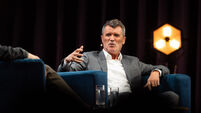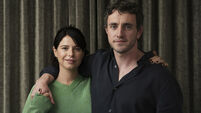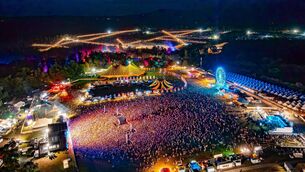Munster In 30 Artworks, No 10: Last Journey, by Denis O’Connor, at Grattan Quay, Waterford
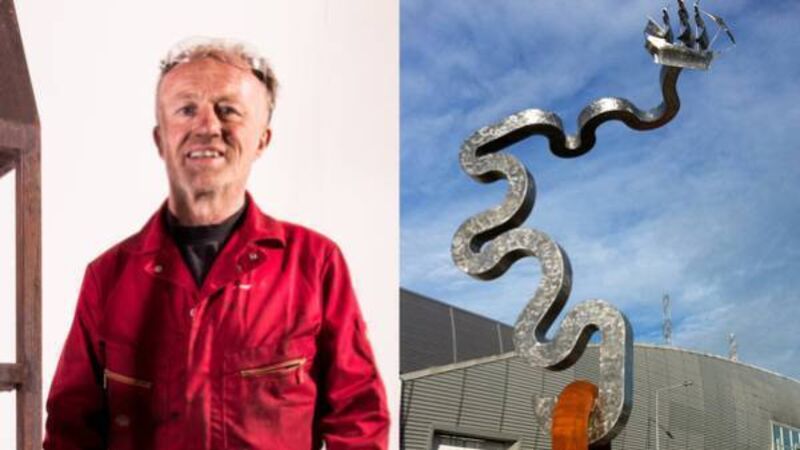
Denis O’Connor and his Turas Set Caithe / Last Journey sculpture on Grattan Quay in Waterford.
At eight metres tall, Denis O’Connor’s Turas Set Caithe / Last Journey sculpture on Grattan Quay in Waterford is unmissable. At its base are the rusted links of a corten steel chain that segue into a twisting, gleaming line of stainless steel, topped with a tall ship under sail.
“The twisted steel is a reference to the Three Sisters – the rivers Barrow, Nore and Suir - that flow into Waterford harbour,” says O’Connor. “And the ship refers to how the harbour itself was the departure point for so many emigrants over the centuries.”
Since its installation in 2010, the reaction to Last Journey has generally been very positive, but O’Connor recalls that the original commission was not all plain sailing. “Initially, I proposed making a sculpture based on a Viking throne,” says O’Connor. “But when I talked about the project with Joe Duffy on the radio, one of the local councillors said it would end up looking like a giant barstool. So we went back to the drawing board after that.”
O’Connor likens the research he does on his proposals to an archaeological dig. “I’ve often come up with stuff that everyone else has forgotten about,” he says. “Apart from Waterford’s association with the Vikings, there was a strong shipbuilding tradition in the ci ty. A Quaker family named the Whites built a lot of ships in Waterford up to the middle of the 19th century. But the vessel in my sculpture is a reference to the Tall Ships that have come into Waterford for a number of events in more recent years.”
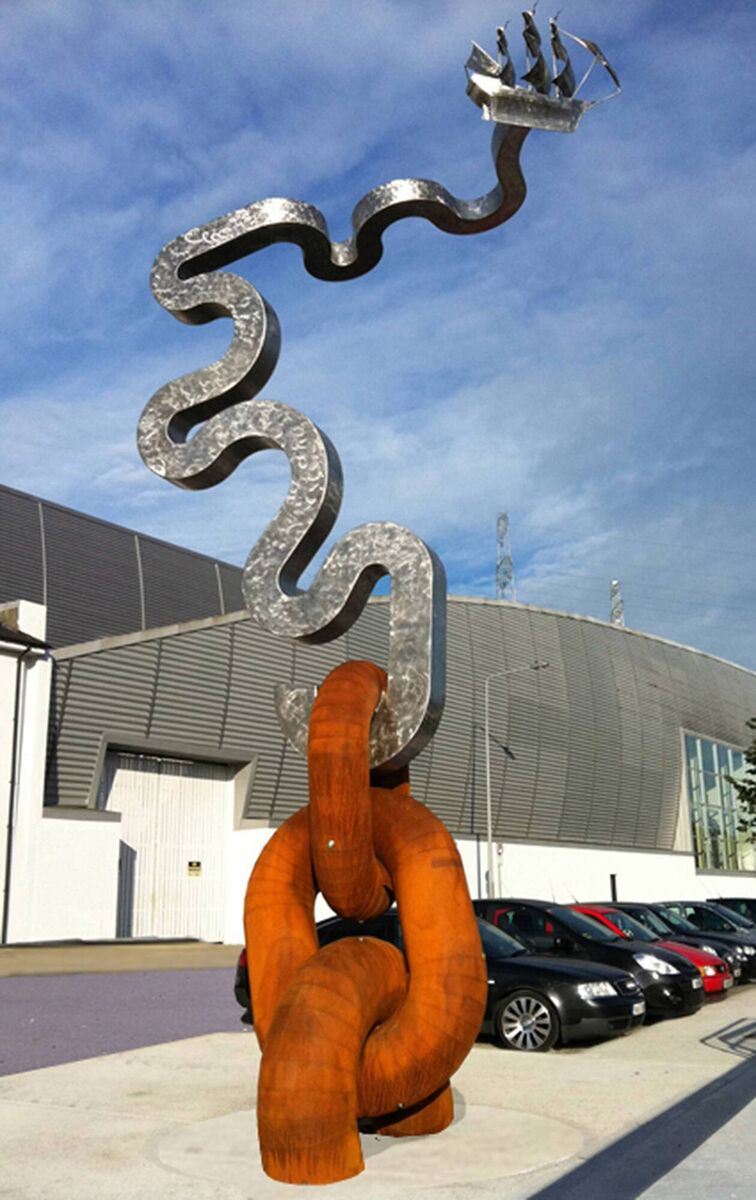
O’Connor made the artwork at the studio in Wirksworth, Derbyshire, in the UK he runs with his partner Bernardine Rutter, an artist who specialises in printmaking. “I actually made two pieces based on the Tall Ships,” he says. “When I showed the second piece to the councillors in Waterford, they agreed to buy that as well. It’s installed a little further along the quays, on a roundabout. I put that on six pillars, so you can’t miss it.”
O’Connor is well-established as a sculptor in the UK, and has won a number of prestigious public commissions, for pieces such as Privilege in Stoke-on-Trent and Distant Travellers in Staffordshire. But the West Cork man also has a number of pieces closer to home, including The Hurlers at Blackpool Bypass, and Lost Industries on Leitrim St, Cork.
“The Hurlers was mostly a tribute to Glen Rovers,” he says, “while Lost Industries was inspired by the old textile mills in Pouladuff. The Hurlers is more visible, and it’s well maintained. But I’m not sure Lost Industries is in the right place, I’d like to see it looked after better.”
O’Connor’s public sculptures are often large in scale, but it is a matter of pride that he makes them himself as far as possible, rather than passing the projects on to assistants or foundries to complete. He traces his interest in handiwork to his father, who worked as a shoemaker in Millstreet. “I always liked to watch him work. I can still picture this beautiful pair of boots he made for Bob Justice, the baker. I suppose that fed into my own interest in making sculpture.”
O’Connor studied at Limerick School of Art from 1978 to 1982. “I was fortunate in that I had great tutors. Tom Fitzgerald was Head of Sculpture, and he was very encouraging. He’s retired a good while now, but he’s still making work. He had an exhibition a few months ago at Limerick City Gallery of Art.”

After Limerick, O’Connor continued his studies at Belfast, before moving to Birmingham to complete his Masters at the University of Central England. “In those days, in the ’80s, there was more chance of doing a Masters in the UK than in Ireland,” he says.
He stayed on in the UK to teach, working three days a week as Senior Lecturer in Fine Art at the University of Derby until he stepped down about five years ago. “I missed the salary at first,” he says. “One thing about public commissions is that they only pay about the same as they did twenty years ago, but on the other hand, I’m always kept busy.”
These days, he spends a large part of every year at his second home in Barna in West Cork, where he is happy to immerse himself in the thriving arts scene. “I’ve always made small pieces for myself, along with the big commissions, and I’ll be showing some of these at the Working Artist Studios in Ballydehob this summer. It’s a lovely space, run by Paul Ó Colmáin and Marie Cullen. They often organise poetry readings and music events, and I plan on giving a number of workshops and talks while the exhibition is running.”
- Denis O’Connor’s exhibition of new sculpture, In Our Time, runs at the Working Artists Studio in Ballydehob from 15th July to 8th August.
- sculptureworks.org.uk
- workingartiststudios.com


